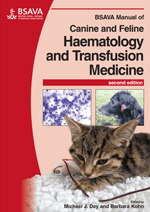
Full text loading...

von Willebrand’s disease (vWD) is caused by a deficiency of, or abnormality in, a large plasma glycoprotein called von Willebrand factor (vWf). It is the most common inherited disorder of haemostasis in dogs, but has been diagnosed only rarely in cats. This chapter considers structure and function of von Willebrand factor; disease mechanism and classification; clinical signs; diagnostic tests; treatment; disease control.
von Willebrand’s disease, Page 1 of 1
< Previous page | Next page > /docserver/preview/fulltext/10.22233/9781905319732/9781905319732.27-1.gif

Full text loading...



